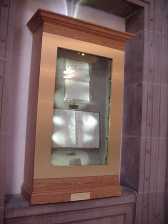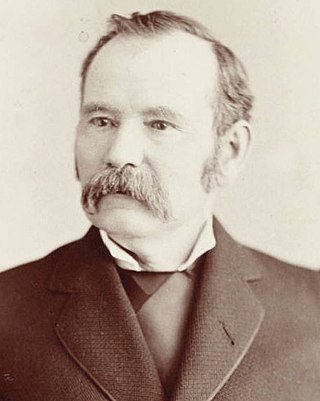| Committee | Date established | Majority party | Majority members | Minority members |
|---|
| Credentials | July 4, 1889 | 56% D | Democrats: Crutcher, Poe, Cavanah, Standrod, Hagan | Republicans: Heyburn, Savidge, Shoup, Allen |
| Committee to receive the U.S. Senate Committee on Indian Affairs | July 4, 1889 | 60% R | Republicans: Sweet, Clagett, McConnell | Democrats: Beane, Ainslie |
| Committee to escort the President to the Chair | July 5, 1889 | 67% D | Democrats: Cavanah, Batten | Republican: Morgan |
| Committee on Committees | July 6, 1889 | 60% R | Republicans: Heyburn, Allen, Hays | Democrats: Standrod, Batten |
| Rules | July 6, 1889 | 60% R | Republicans: Shoup, Beatty, Morgan | Democrats: Reid, Mayhew |
| Committee to wait upon the Chief Justice | July 8, 1889 | 67% D | Democrats: Ainslie, King | Republican: McConnell |
| Ways and Means | July 8, 1889 | 50%–50% | Republicans: Hasbrouck, Wilson, Shoup | Democrats: Crutcher, Harris, Blake |
| Executive Department | July 8, 1889 | 57% R | Republicans: Gray, Savidge, Allen, Hampton | Democrats: Ainslie, Coston, Poe |
| Legislative Department | July 8, 1889 | 56% R | Republicans: Morgan, Pinkham, Robbins, Lewis, Glidden | Democrats: Blake, Pefley, Pierce, Stull |
| Judiciary | July 8, 1889 | 53% R | Republicans: Heyburn, Sweet, Beatty, Wilson, Howe, Hampton, Morgan, Savidge | Democrats: Mayhew, Ainslie, Woods, Reid, Stull (to July 16), Harris, Batten, Hagan (from July 16) |
| Preamble and Bill of Rights | July 8, 1889 | 50%–50% | Republicans: Shoup, Morgan, Hammell | Democrats: Standrod, Clark, Steunenberg |
| Names, Boundaries and Organization of Counties | July 8, 1889 | 60% D | Democrats: Reid, King, Jewell | Republicans: Crook, Hasbrouck |
| Seat of Government, Public Institutions, Buildings and Grounds | July 8, 1889 | 57% D | Democrats: Cavanah, Crutcher, Kinport, McMahon | Republicans: Gray, McConnell, Melder |
| Education, Schools, School and University Lands | July 8, 1889 | 56% R | Republicans: Shoup, Pinkham, Harkness, Armstrong, McConnell | Democrats: Batten, Chaney, Hogan, Bevan |
| Elections and Right of Suffrage | July 8, 1889 | 57% R | Republicans: Beatty, Salisbury, Heyburn, Hays | Democrats: Ainslie, Mayhew, Beane (to July 18), Hagan (from July 18) |
| Revenue and Finance | July 8, 1889 | 56% R | Republicans: Hays, Sweet, Hasbrouck, Crook, Glidden | Democrats: Blake, Hogan, Lamoreaux, Steunenberg |
| Legislative Apportionment | July 8, 1889 | 56% R (to July 20)
61% R (from July 20) | Republicans: Shoup, Underwood, Heyburn, Ballantine (to July 10), Pyeatt, Hendryx (to July 16), Whitton, Brigham (to July 31), Hays, Maxey, Pinkham (from July 10), Melder (from July 16), Sinnott (from July 20), Sweet (from July 31) | Democrats: Myer, Kinport, Parker, Stull (to July 16), Poe, Lamoreaux, Standrod, Jewell, Cavanah (from July 16 to July 20) |
| Militia and Military Affairs | July 8, 1889 | 57% R | Republicans: Hammell, Pyeatt, Campbell, Pinkham | Democrats: Clark, Myer, Hogan |
| Public and Private Corporations | July 8, 1889 | 56% R | Republicans: Ballantine, Andrews, Savidge, Glidden, Pritchard | Democrats: Mayhew, Kinport, Chaney, Bevan |
| Federal Relations | July 8, 1889 | 60% R | Republicans: Sweet, Salisbury, Moss | Democrats: Nelson, Anderson |
| Municipal Corporations | July 8, 1889 | 56% D | Democrats: Woods, Hagan, Pierce, Pefley, Vineyard | Republicans: Beatty, Harkness, Crook, Wilson |
| Labor | July 8, 1889 | 56% R | Republicans: Armstrong, Sinnott, Howe, Heyburn, Robbins | Democrats: King, Lamoreaux, McMahon, Pefley |
| Schedule | July 8, 1889 | 56% R (to July 29)
56% D (from July 29) | Republicans: Gray, Sweet, Howe (to July 29), Savidge, Hampton | Democrats: Woods, Beane (to July 18), Blake, Vineyard, King (from July 18), Reid (from July 29) |
| Manufactures, Agriculture and Irrigation | July 8, 1889 | 56% D | Democrats: Stull (to July 16), Coston, Jewell, Beane (to July 17), Taylor, Cavanah (from July 16), Anderson (from July 17) | Republicans: Allen, McConnell, Harkness, Moss |
| Mines and Mining | July 8, 1889 | 56% D | Democrats: Crutcher, Cavanah, Bevan, King, Standrod | Republicans: Glidden, Ballantine, Salisbury, Hays |
| Live Stock | July 8, 1889 | 60% R | Republicans: Harkness, Underwood, Pyeatt | Democrats: Myer, Pierce |
| Printing and Binding | July 8, 1889 | 57% R | Republicans: Allen, Hays, Lemp, Sinnott | Democrats: Clark, Parker, Steunenberg |
| Revision and Enrollment | July 8, 1889 | 56% R | Republicans: Beatty, Hammell (to July 27), Morgan, Shoup, Howe, Sweet (from July 27) | Democrats: Hagan, Vineyard, Harris, Standrod |
| Salaries of Public Officers | July 8, 1889 | 60% D | Democrats: Poe, Coston, Reid | Republicans: Wilson, Hasbrouck |
| Public Indebtedness and Subsidies | July 8, 1889 | 60% D | Democrats: Hagan, Batten, Taylor | Republicans: McConnell, Harkness |
| Committee to escort the ladies of the Woman's Christian Temperance Union | July 9, 1889 | 100% D | Democrats: Pefley, Mayhew, Ainslie | — |
| Special Committee on Finance | July 18, 1889 | 100% R | Republicans: McConnell, Harkness, Lemp | — |
| Committee to receive the delegation of Members of Congress | July 20, 1889 | 50%–50% | Republicans: Hays, Clagett | Democrats: Ainslie, Reid |
| Engrossing | July 26, 1889 | 67% R | Republicans: Hasbrouck, Sweet | Democrat: Mayhew |
| Special Committee on Revision of the Minutes and Proceedings of the Convention | July 27, 1889 | 67% R | Republicans: Wilson, Moss | Democrat: Clark |
| Select Committee to draft Article VIII, Section 6 | July 30, 1889 | 60% D | Democrats: Ainslie, Reid, Mayhew | Republicans: Hays, Clagett |
| Address to the People | August 3, 1889 | 50%–50% | Republicans: Clagett, Pinkham, Hays, McConnell, Armstrong | Democrats: Ainslie, Reid, Taylor, Clark, Cavanah |

















